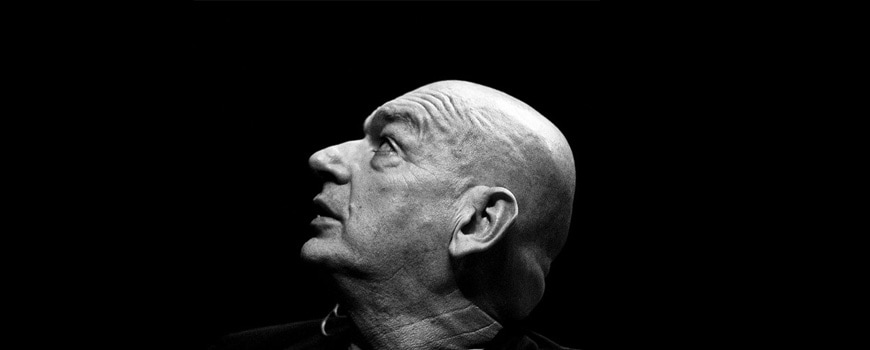Louvre Abu Dhabi – Architect: Jean Nouvel
Abu Dhabi, United Arab Emirates
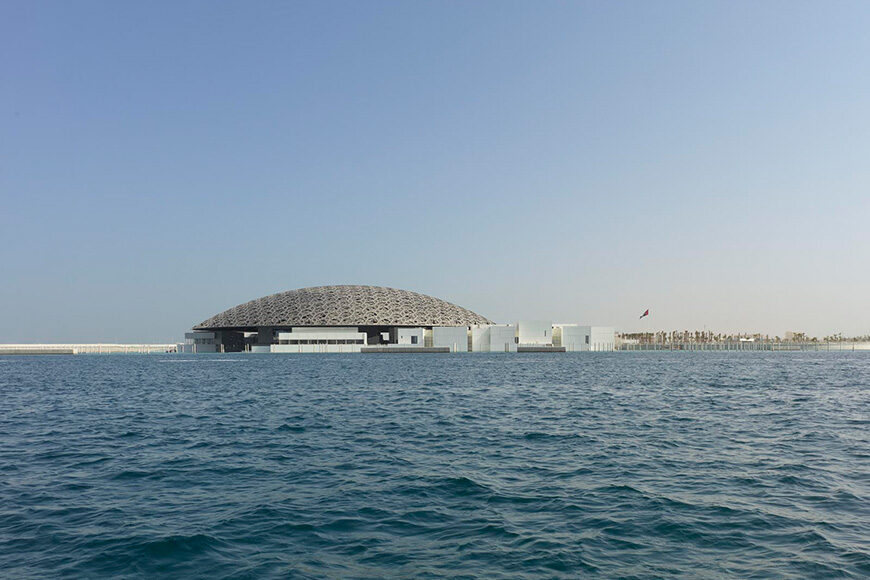
The Louvre Abu Dhabi is a museum of art, culture, and history located in the capital of the United Arab Emirates and designed by French architect Jean Nouvel.
Above: the Louvre Abu Dhabi from the sea; © Louvre Abu Dhabi – Photography Roland Halbe.
Introduction
The United Arab Emirates is a small and young country, nevertheless, it has rapidly become one of the most important business and tourist destinations in the Middle East and Asia.
About the size of Austria, the country is composed of seven independent emirates joined into a federation; the Emirate of Abu Dhabi is the largest and most populated in the UAE.
Much of the richness of Abu Dhabi comes from the large oil reserves of the country; yet, the emirate has cleverly started a policy aimed at developing other, more immaterial, resources, to diversify its economy, and become a local and global reference point in fields such as tourism, healthcare, education, and culture.
The development of the Saadiyat Cultural District
The leading project for the cultural development of Abu Dhabi is the Saadiyat Cultural District, located on a 27-square-kilometer island just 500 meters off the emirate’s coast. Devised by Abu Dhabi’s Tourism Development & Investment Company (TDIC), the Cultural District will include four museums and a Performing Art Center, when completed.
The museums are the Guggenheim Abu Dhabi, focused on modern and contemporary art, designed by Frank Gehry; the Zayed National Museum, dedicated to the history of the UAE, designed by Norman Foster; the Maritime Museum by Tadao Ando; and the Louvre Abu Dhabi by Jean Nouvel; the Performing Arts Center designed by Zaha Hadid complements the offer of major cultural venues in the district.
The architecture of the Louvre Abu Dhabi by Jean Nouvel
Following a thirty-year agreement between France and the United Arab Emirates, the Louvre Abu Dhabi Museum showcases artworks on loan from both state-owned French museums – including the Louvre, the Centre Pompidou, the Musée d’Orsay, the Musée de l’Orangerie, the Musée du Quai Branly, the Musée National des Châteaux de Versailles, and the Musée Rodin, among others – and from the Louvre Abu Dhabi’s collection.
The concept behind the Louvre Abu Dhabi was to establish a “universal” art museum with exhibitions covering various cultural areas and historical periods. The museum officially opened on November 11, 2017.
The design concept developed in 2007 by Jean Nouvel for the Louvre Abu Dhabi was substantially inspired, both symbolically and formally, by elements of the Arabian architectural culture. At the same time, the French architect had to cope with the site’s peculiar climatic and geographical conditions because, as Jean Nouvel says, “All climates like exceptions. Warmer when it is cold. Cooler in the tropics. People do not resist thermal shock well. Nor do works of art. Such elementary observations have influenced the Louvre Abu Dhabi. It wishes to create a welcoming world serenely combining light and shadow, reflection and calm.”
Located on an artificial island, the 63,000-square-meter (680,000-square-foot) museum complex is composed of several structurally independent low-rise buildings, rather simple parallelepipeds, arranged in an apparently random sequence to recall the urban structure of a medina.
The buildings alternate with paved areas, and water pools – a reference to the traditional role of water in Islamic architecture and a clever solution to provide natural cooling and ventilation for people and artworks.
The materials adopted for these structures are mostly earthy and mineral: stone, stucco, and plaster.
The museum includes about 6,700 square meters (72,000 square feet) of permanent exhibition galleries and 2,300 square meters (25,000 square feet) of temporary exhibition spaces.
The building complex also includes a covered promenade overlooking the Persian Gulf sea, located under the imposing 180-meter-wide perforated dome of the museum, spaces for temporary exhibitions, a Children’s Museum, a restaurant, a boutique, and a cafe.
Two-thirds of this small “art village” is covered by a large circular dome, 180 meters / 590 feet across, which provides shelter, shading, and natural lighting to the complex.
The Louvre Abu Dhabi at night; photo Mohamed-Somji.
The museum’s covered plaza; © Louvre Abu Dhabi – Photography Roland Halbe.
The great dome
The dome of the Louvre Abu Dhabi is the signature feature of the museum and represents, by far, its most technically demanding structure.
Again, the dome is formally inspired by traditional Islamic architecture with direct references to the domes of mosques and madrasas.
The cladding pattern evokes those created by the interlaced palm leaves used as a traditional roofing material in many Arab countries, and by the carved wood latticework traditionally adopted for the Mashrabiya bay windows. The idea is to achieve a combination of shading and beams of light, a rain of light as it has been called, and a microclimate similar to the Arabian souks.
The dome structure is constituted by a double steel shell, clad internally and externally with 10 layers of white-painted steel latticework. Supported by only four points, the structure looks like it is floating in the air, and requires a complex submerged basement, made in salt water-resistant concrete and provided with an array of steel piles driven into the sea ground. A 1:33 scale prototype, developed by the German company One to One, was built in 2009 to get a visual and structural real-world simulation of the dome. The detailed structural design of the dome was carried out by engineering design firms Arup, and BuroHappold.
While the low-rise buildings – housing exhibition galleries, workshops, offices, and services – are somehow more private volumes, the covered area created by the dome is intended as an almost public space, a promenade where facades, courtyards, narrow streets, pools, small gardens, sunny and shady spaces alternate to one another.
A view of the museum from the west; photo Mohamed-Somji.
Views of the Louvre Abu Dhabi in September 2017; photographs by Mohamed-Somji.
Water is a recurring element in the museum’s architecture; photo Mohamed-Somji.
Collection and permanent exhibition
The museum’s collection, mostly comprising works on loan from the Louvre in Paris and other French museums, includes notable pieces by artists such as Osman Hamdi Bey, Paul Gauguin, Édouard Manet, Pablo Picasso, and Paul Klee, among others; along with works acquired by the museum itself, including Piet Mondrian’s Composition with Blue, Red, Yellow and Black (1922).
The visit begins in the imposing “Great Vestibule” from which twelve thematic and chronological galleries run throughout the building complex. Spanning over 5,000 years, pieces on view depict the historical and cultural cross-influences between different geographical regions of the world.
The Louvre Abu Dhabi’s permanent exhibition features many masterpieces, including The Gypsy by Edouard Manet, Children Wrestling by Paul Gauguin, Portrait of a Lady by Pablo Picasso, and a large sculptural installation by Ai Weiwei, to name a few. The display of the controversial Salvator Mundi attributed to Leonardo da Vinci (acquired at a Christie’s auction for $450 million in 2017), which was expected to be prominently featured in the museum, has been postponed indefinitely.
The museum also commissioned site-specific works to American artist Jenny Holzer and Italian sculptor Giuseppe Penone, installed in the outdoor spaces of Jean Nouvel’s building.
Princess Henouttawy’s funeral set cardboard, ca. 950 BCE-900 BCE, painted wood.
Osman Hamdi Bey, A Young Emir Studying, 1878, Oil on canvas, © Louvre Abu Dhabi, Photography Agence photo F
Gustave Caillebotte, The Bezique Game, 1880, oil on canvas; image courtesy of Louvre Abu Dhabi.
Pablo Picasso, Portrait of a Lady (detail), 1928, oil on canvas; image courtesy of Louvre Abu Dhabi.
Project data
Architect: Ateliers Jean Nouvel, Paris
Client: TDIC (Tourism Development & Investment Company)
Client advisor: Agence France-Muséums
Structural design: Arup and BuroHappold
Museography: Anna Ugolini, Renaud Pierard
Main contractor: Arabtec with Constructora San Jose SA and Oger Abu Dhabi LLC
Construction budget: 2,4 billion AED (650 million USD)
All images are courtesy of the Louvre Abu Dhabi.
How our readers rate this museum (you can vote)
copyright Inexhibit 2024 - ISSN: 2283-5474


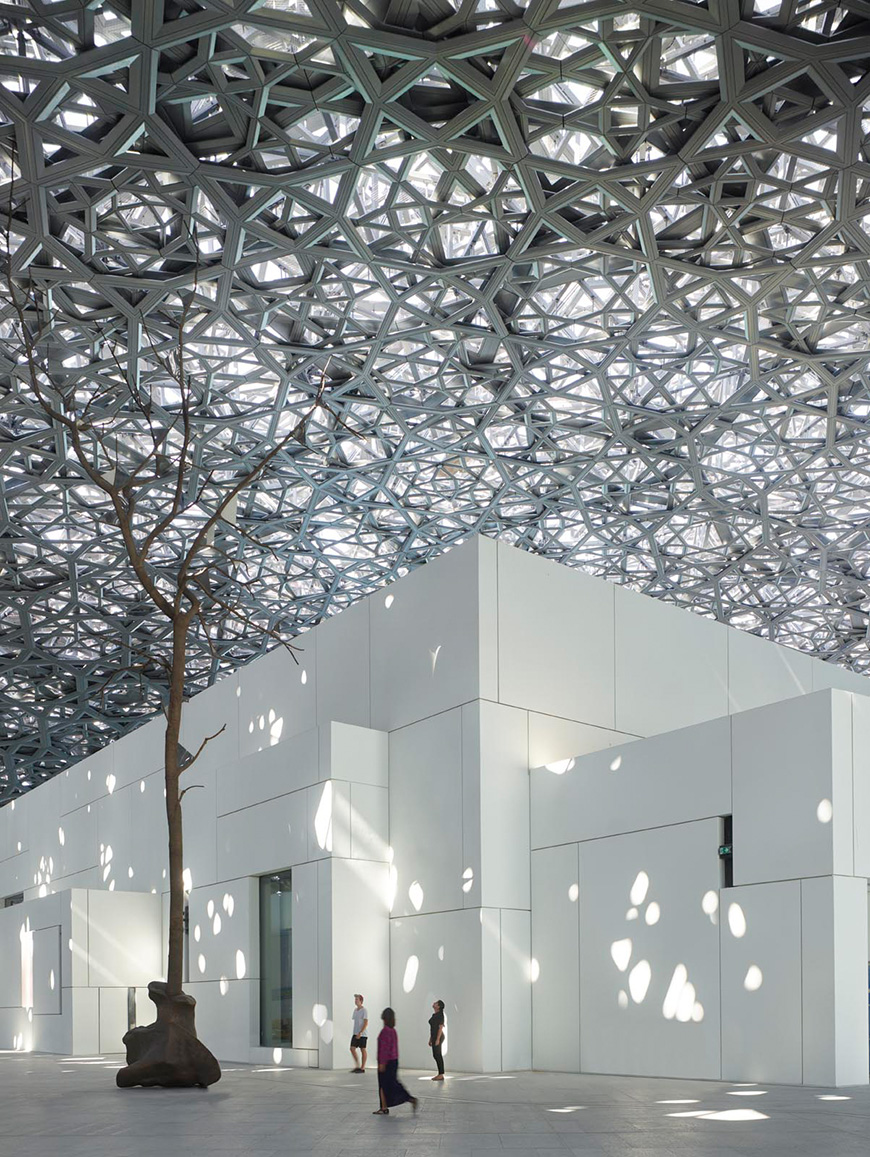


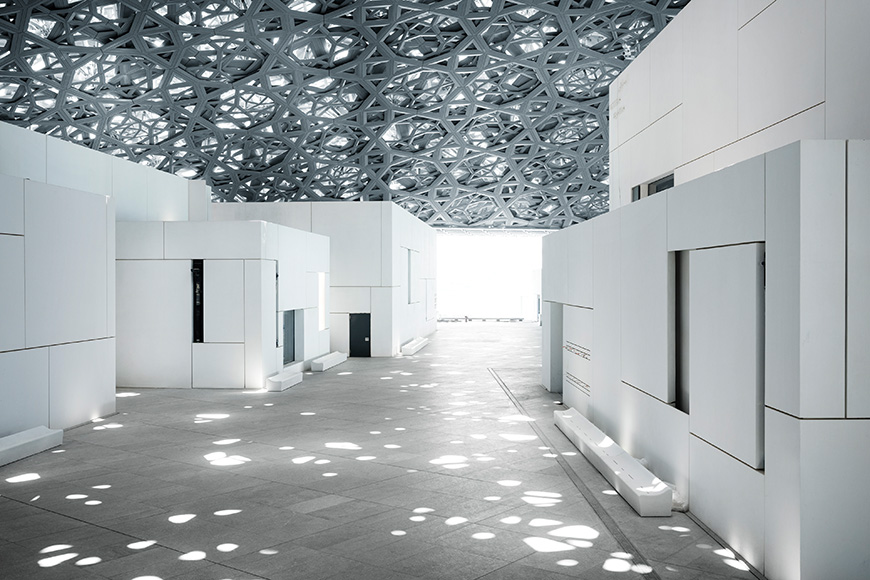


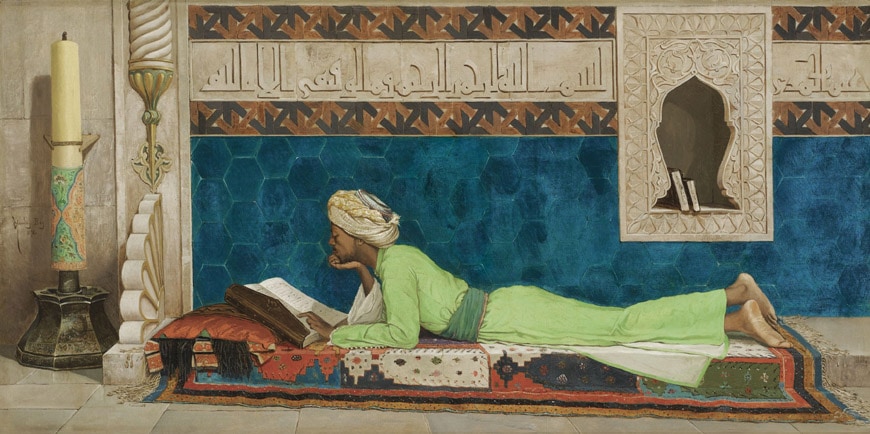

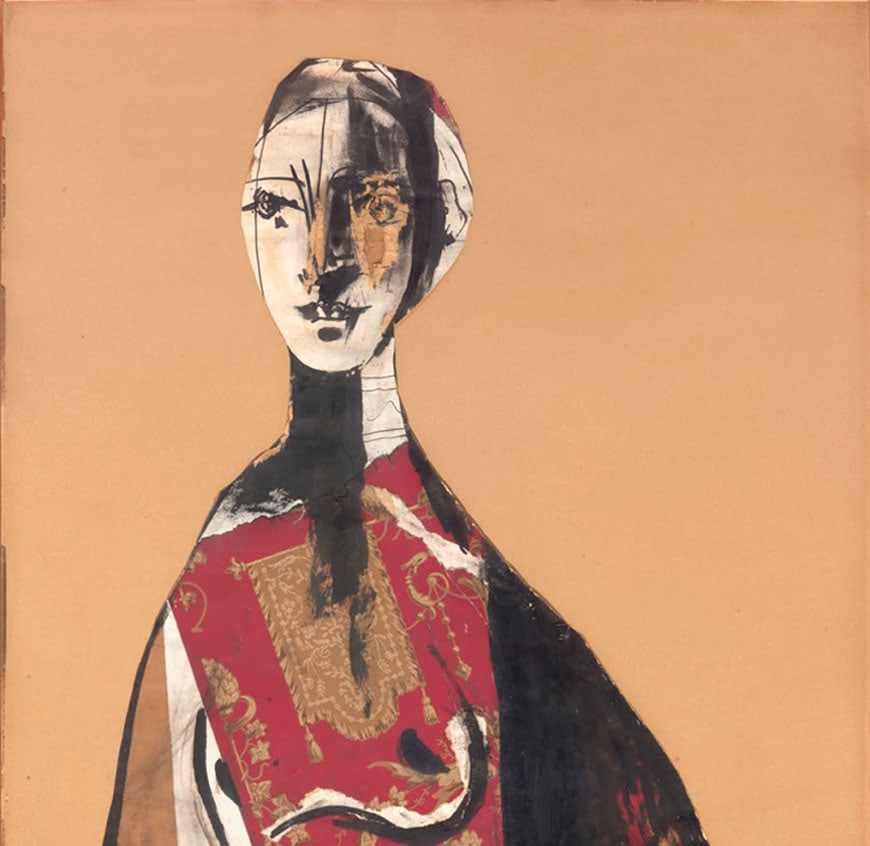


 (5 votes, average: 3.60 out of 5)
(5 votes, average: 3.60 out of 5)